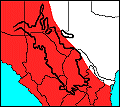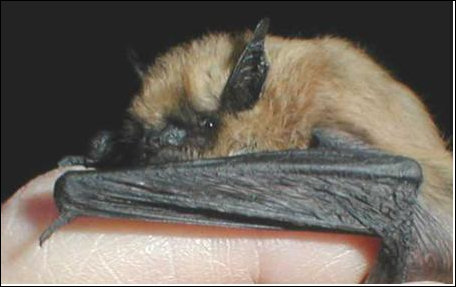


Myotis californicus. National Park Service photograph.
These small bats are inhabitants of wooded canyons, open deciduous and coniferous forests, and brushy hillsides. Their daytime roosts are in crevices in the tops or sides of shallow caves, mine tunnels, in cliffs and cavities where there is loose rock, and in houses (Burt and Grossenheider 1976). Maybe, more than any other bat, this one readily utilizes man-made structures for night-time roosting (Schmidly 1977). They do not form the compact colonial clusters that are characteristic of many other species of Myotis, but roost in small colonies of 1-25 individuals, and they make their appearance much later in the evening than their relatives (Davis and Schmidly 1994). It is surmised that this animal retreats to a deep rock crevice and enters a state of torpor (a time or dormancy or inactivity) during the coldest times of winter weather (Tuttle 2003).
Burt, W. H., and R. P. Grossenheider. 1976. A field guide to the mammals. Houghton Mifflin, Boston.
Davis, W. B., and D. J. Schmidly. 1994. The mammals of Texas. Texas Parks and Wildlife Press, Austin.
Schmidly, D. J. 1977. The mammals of Trans-Pecos Texas including Big Bend National Park and Guadalupe Mountains National Park. Texas A&M University Press, College Station.
Tuttle, M. D. 2003. Texas bats. Bat Conservation International, Inc., Austin.
A. Ruth Huckaby, Graduate Student, BIOL 5301—Natural History of the Chihuahuan Desert, June 2006.
Huckaby Update: 22 June 2006
Last Update: 23 Jul 2009